
La Latina: The Heartbeat of Madrid's Old Town
Discover La Latina: Madrid's historic neighbourhood filled with tapas bars, vibrant markets, and rich cultural heritage.
Nestled in the heart of Madrid, La Latina is a captivating neighbourhood that effortlessly blends the old with the new. Famous for its narrow, winding streets and historic buildings, this area offers an authentic glimpse into the city's rich past. Stroll through its charming plazas, such as Plaza de la Cebada and Plaza de la Paja, where you can relax at a traditional café or explore local shops selling unique crafts. La Latina is also a culinary paradise. The neighbourhood is teeming with tapas bars and restaurants where you can indulge in delicious Spanish cuisine. Sundays are particularly special, as the streets come alive with the vibrant El Rastro flea market. Here, you can hunt for antiques, vintage clothes, and other treasures while soaking in the lively atmosphere. Cultural enthusiasts will appreciate the historical landmarks scattered throughout La Latina. The San Francisco el Grande Basilica, with its stunning dome and beautiful frescoes, is a must-visit. For a touch of local flavour, don't miss out on the traditional fiestas and festivals that often fill the streets with music, dance, and joy.
Local tips in La Latina
- Visit El Rastro early on Sunday mornings to avoid the crowds and get the best deals.
- Wear comfortable shoes as the streets are cobbled and can be tricky to navigate.
- Try the local specialty, 'callos a la madrileña', at one of the traditional tapas bars.
- Take a guided walking tour to fully appreciate the history and stories of La Latina's landmarks.
- Check local event listings for upcoming fiestas and festivals during your visit.
La Latina: The Heartbeat of Madrid's Old Town
Nestled in the heart of Madrid, La Latina is a captivating neighbourhood that effortlessly blends the old with the new. Famous for its narrow, winding streets and historic buildings, this area offers an authentic glimpse into the city's rich past. Stroll through its charming plazas, such as Plaza de la Cebada and Plaza de la Paja, where you can relax at a traditional café or explore local shops selling unique crafts. La Latina is also a culinary paradise. The neighbourhood is teeming with tapas bars and restaurants where you can indulge in delicious Spanish cuisine. Sundays are particularly special, as the streets come alive with the vibrant El Rastro flea market. Here, you can hunt for antiques, vintage clothes, and other treasures while soaking in the lively atmosphere. Cultural enthusiasts will appreciate the historical landmarks scattered throughout La Latina. The San Francisco el Grande Basilica, with its stunning dome and beautiful frescoes, is a must-visit. For a touch of local flavour, don't miss out on the traditional fiestas and festivals that often fill the streets with music, dance, and joy.
Iconic landmarks you can’t miss
Garden of the Prince of Anglona
Discover the tranquil beauty and historical charm of the Garden of the Prince of Anglona, Madrid's hidden oasis perfect for relaxation and exploration.
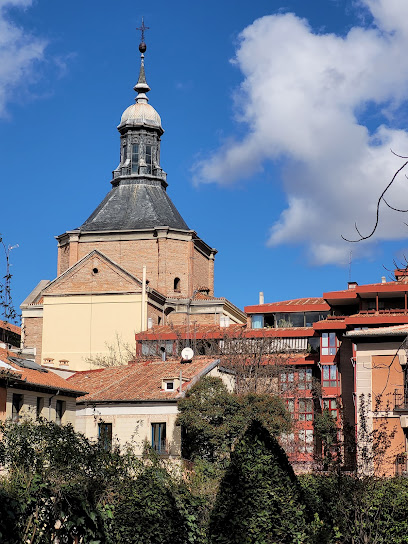
Chapel of Our Lady and of Saint John of Letrán
Discover the historical and spiritual charm of the Chapel of Our Lady and Saint John of Letrán in the heart of Madrid, a must-visit for every traveler.
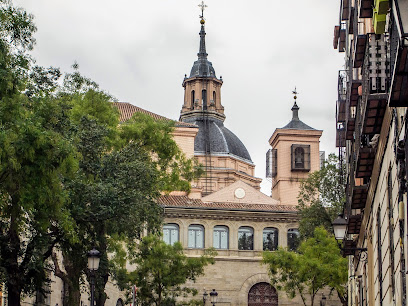
Plaza de la Paja
Explore the enchanting Plaza de la Paja, a historical landmark in Madrid that blends rich heritage with modern culture.
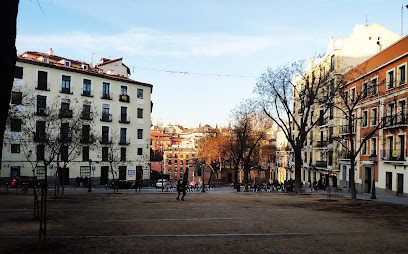
Latin Gate
Explore the captivating history and architectural beauty of Latin Gate, a must-visit landmark in the heart of Madrid.
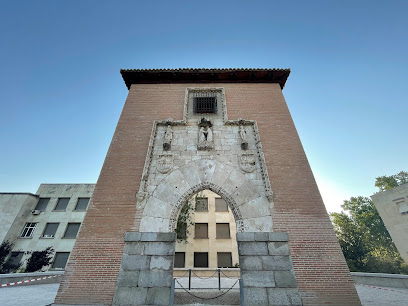
Fuente de la Plaza de la Cebada
Explore the enchanting Fuente de la Plaza de la Cebada, a serene fountain in the heart of Madrid, where history and modernity converge in a picturesque setting.
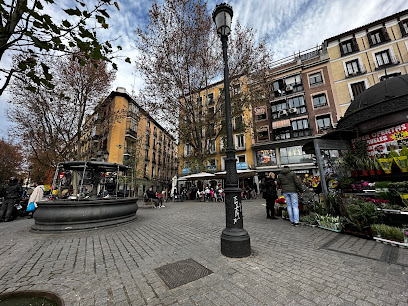
Hombre Sentado
Discover the elegance of Hombre Sentado, a captivating sculpture in Madrid that embodies the city’s rich artistic heritage and cultural significance.
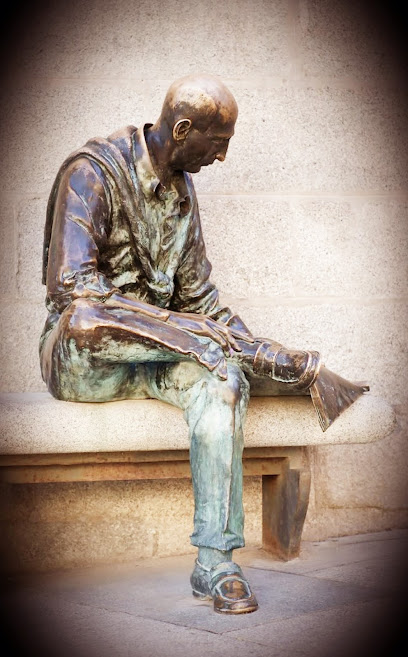
Fuente de la plaza de Los Carros
Explore the Fuente de la Plaza de Los Carros, a stunning sculpture in Madrid's Centro, blending art and culture in a vibrant atmosphere.

Retablo del Altar Mayor (Iglesia de San Andrés Apóstol)
Explore the exquisite Retablo del Altar Mayor at Iglesia de San Andrés Apóstol in Madrid, a masterpiece of Baroque art and history waiting to be discovered.
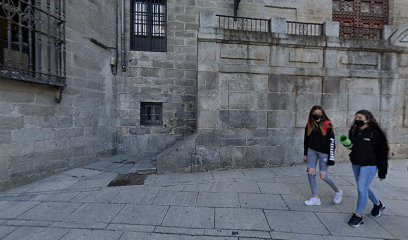
Unmissable attractions to see
Catedral de la Almudena
Explore the stunning Catedral de la Almudena, Madrid's majestic cathedral blending rich history, breathtaking architecture, and cultural significance.
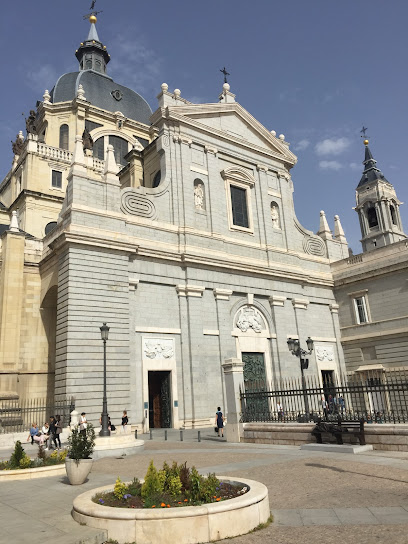
Campo del Moro
Explore the lush landscapes of Campo del Moro, a serene garden oasis next to Madrid's Royal Palace, offering relaxation and stunning views.

Garden of the Prince of Anglona
Discover tranquility in the heart of Madrid at the Garden of the Prince of Anglona, a picturesque retreat with lush landscapes and historical charm.
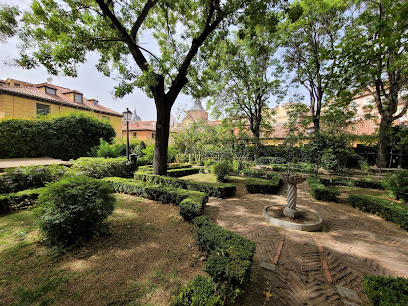
Chapel of Our Lady and of Saint John of Letrán
Explore the serene Chapel of Our Lady and of Saint John of Letrán, a hidden gem in Madrid's historical heart, blending spirituality and stunning architecture.
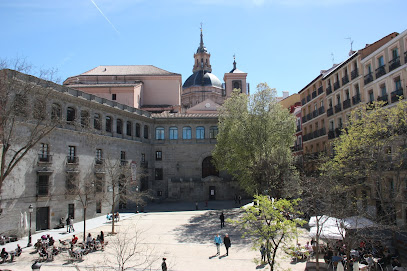
Plaza Del Gral. Vara De Rey
Explore the vibrant Plaza Del Gral. Vara De Rey, a cultural hotspot in Madrid filled with history, dining, and lively entertainment for all tourists.

Palacio de los Vargas
Discover the historic beauty of Palacio de los Vargas in Madrid, a stunning cultural landmark showcasing the city's rich architectural heritage.
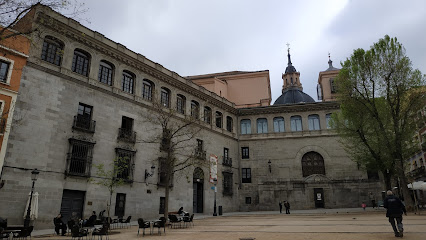
Estudio Galeria Villanueva
Discover Estudio Galeria Villanueva, an artistic gem in Madrid's Centro district, showcasing contemporary art from emerging and established talents.
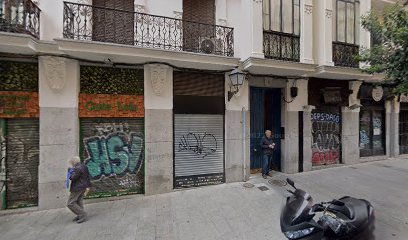
Essential places to dine
Casa Lucio
Discover authentic Spanish cuisine at Casa Lucio in Madrid, renowned for its traditional dishes like huevos rotos in a charming setting.
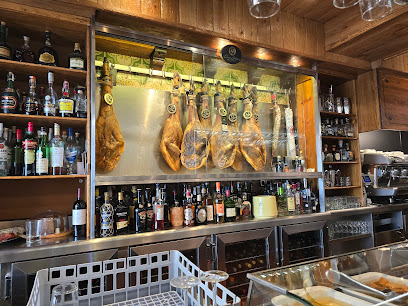
La Musa Latina
Experience authentic Spanish tapas at La Musa Latina in Madrid – where vibrant flavors meet cultural heritage.

Lamiak Cava Baja
Experience authentic Spanish tapas and vibrant atmosphere at Lamiak Cava Baja, a must-visit bar and bistro in the heart of Madrid.
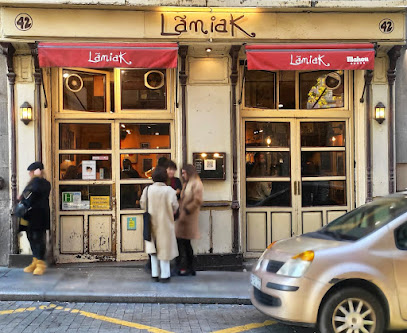
Los Secretos de Lola Restaurante
Experience authentic Spanish cuisine at Los Secretos de Lola Restaurante in Madrid's vibrant Centro district.

La Perejila
Experience authentic Spanish tapas at La Perejila in Madrid's vibrant Centro district – where every dish tells a story.
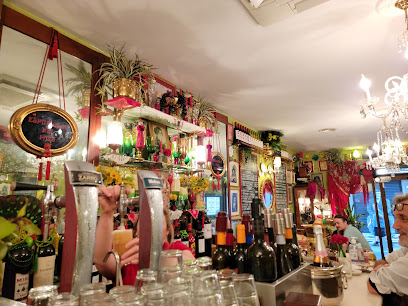
LA TABERNA DEL CAPITÁN ALATRISTE
Experience authentic Castilian cuisine at La Taberna del Capitán Alatriste in Madrid - where tradition meets flavor in every dish.
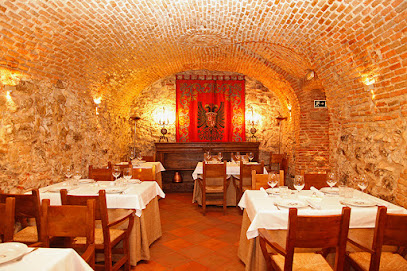
Cava Baja 17
Experience authentic Spanish cuisine at Cava Baja 17 - a must-visit grill restaurant in the heart of Madrid's vibrant Centro district.
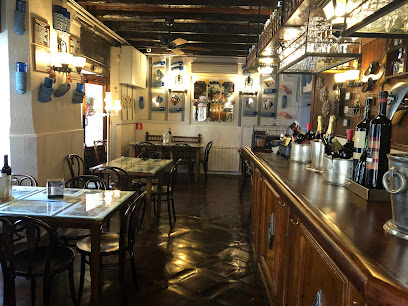
Ástor gastro-place
Experience the vibrant tastes of Mediterranean cuisine at Ástor gastro-place in Madrid's lively Centro district.
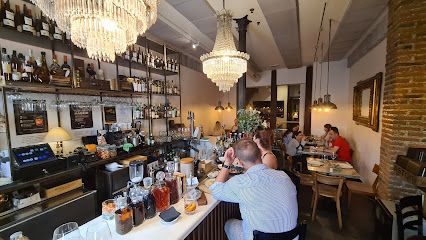
Casa Lucas
Experience authentic Spanish tapas at Casa Lucas in Madrid's vibrant Centro district—perfect for food lovers seeking tradition and flavor.
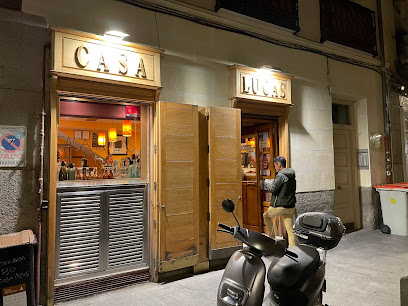
Taberna Rayuela
Experience authentic Spanish tapas and vibrant dining at Taberna Rayuela in the heart of Madrid's historic Centro district.
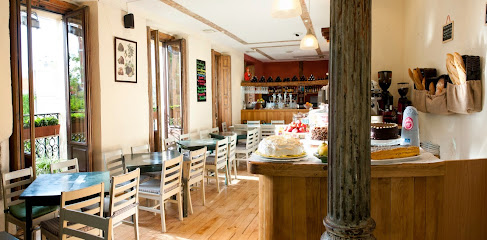
Markets, malls and hidden boutiques
Mulaya
Discover the latest trends in women's fashion at Mulaya, a stylish clothing store in the heart of Madrid's vibrant Centro district.

HUMANA Vintage
Explore HUMANA Vintage, Madrid's premier second-hand store, where sustainable fashion meets unique style in the heart of the city.

COCOL
Explore the artistry of Spanish handicrafts at COCOL, a unique store in Madrid's Centro district, perfect for finding one-of-a-kind souvenirs.

Curiosity shop
Discover unique gifts and souvenirs at Curiosity Shop in Madrid, where creativity and culture blend beautifully in a delightful shopping experience.
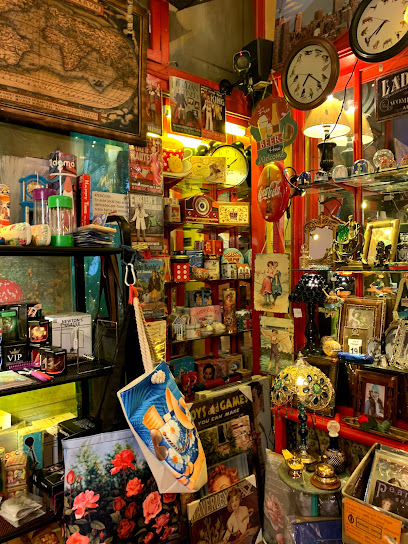
Cocó's couch
Explore a treasure trove of vintage fashion, unique jewelry, and stylish accessories at Cocó's Couch in Madrid's vibrant Centro district.
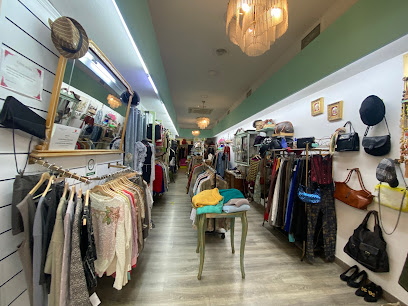
Zakka
Discover unique home goods and artisanal treasures at Zakka, a charming store in the heart of Madrid's Centro district.
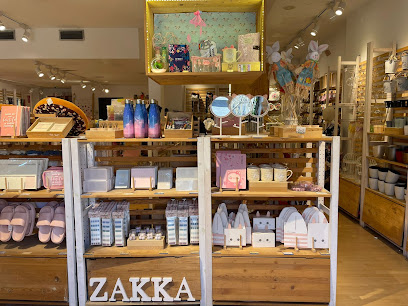
El Moderno Gallery
Discover a vibrant selection of posters at El Moderno Gallery, where art meets passion in the heart of Madrid.
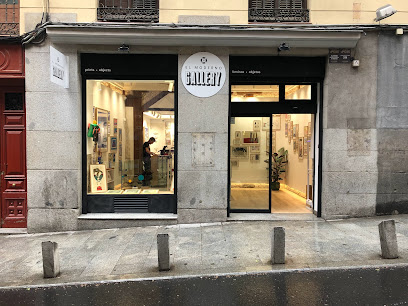
Toledo Crafts Studio
Explore Toledo Crafts Studio in Madrid for exquisite handmade gifts, art supplies, and unique costume jewelry that celebrate Spanish craftsmanship.

Puesto MANOLO
Explore Puesto MANO in Madrid for a unique selection of handcrafted gifts and souvenirs that celebrate Spanish culture and artistry.
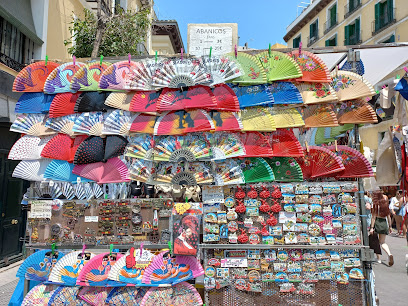
Spain Here Souvenirs
Explore unique gifts and authentic souvenirs at Spain Here Souvenirs, the perfect shop for capturing the spirit of Madrid.
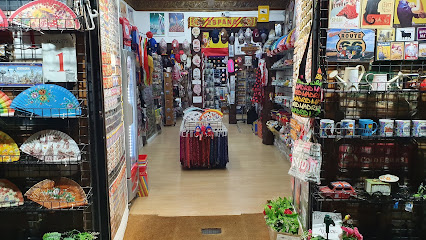
Essential bars & hidden hideouts
El Viajero
Discover El Viajero, a vibrant restaurant in Madrid's Centro district offering delicious tapas and fusion cuisine in a lively atmosphere.
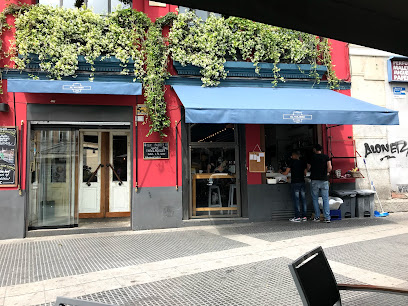
Hopper
Hopper in Madrid: Experience a lively bar and grill offering delicious tapas and an extensive drink menu in the heart of the city.
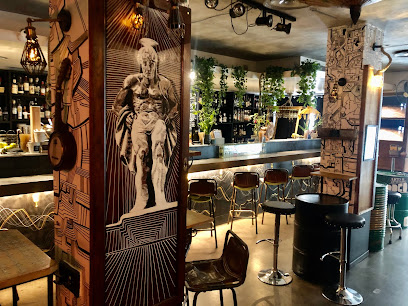
Pajaritos mojados
Discover the vibrant flavors of Pajaritos Mojados in Madrid, offering delicious grilled dishes in a lively atmosphere at affordable prices.
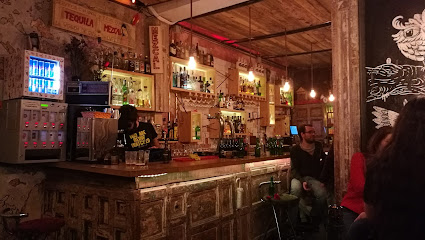
Terraza Collins
Discover the vibrant nightlife at Terraza Collins, a lively cocktail bar in Madrid offering delicious drinks, tapas, and live piano music.
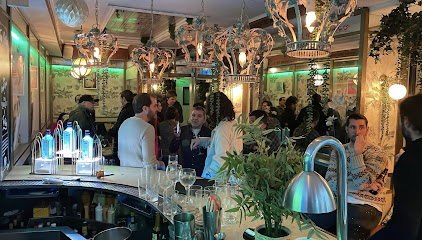
47 cocktail bar
Savor exquisite cocktails in the heart of Madrid's lively Centro district at 47 Cocktail Bar, a perfect nightlife destination for tourists.
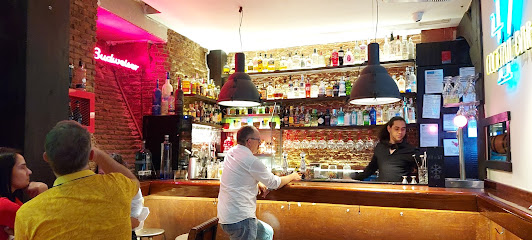
El Loft La Latina
Experience the vibrant ambiance of El Loft La Latina, a must-visit bar in Madrid offering diverse drinks, delicious tapas, and a lively atmosphere.
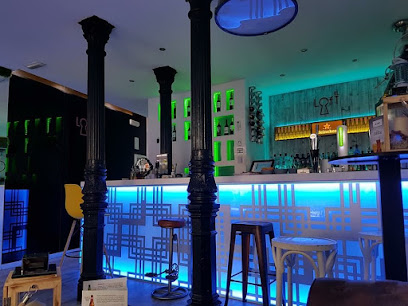
Windguru Bar
Discover the vibrant spirit of Windguru Bar in Madrid's Centro, a perfect retreat for drinks and relaxation in the heart of the city.
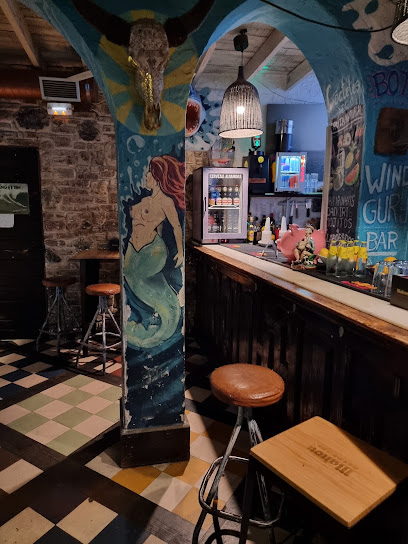
La Terraza
Experience the vibrant heart of Madrid at La Terraza, where great drinks and a lively atmosphere await every visitor.
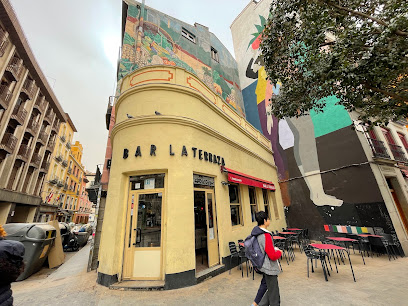
Déjà Vu Music Bar
Discover the vibrant nightlife of Madrid at Déjà Vu Music Bar, where live music and innovative cocktails create an unforgettable experience.

La Cuevita de La Latina
Experience the charm of La Latina at La Cuevita, a cozy pub serving delectable tapas and local drinks in the heart of Madrid.

Local Phrases
-
- HelloHola
[oh-la] - GoodbyeAdiós
[ah-dee-ohs] - YesSí
[see] - NoNo
[noh] - Please/You're welcomePor favor/De nada
[por fah-bor/deh nah-dah] - Thank youGracias
[grah-see-ahs] - Excuse me/SorryPerdón/Lo siento
[pair-dohn/loh see-ehn-toh] - How are you?¿Cómo estás?
[koh-moh ehs-tahs] - Fine. And you?Bien. ¿Y tú?
[byen. ee too] - Do you speak English?¿Hablas inglés?
[ah-blahs een-glays] - I don't understandNo entiendo
[noh ehn-tee-ehn-doh]
- HelloHola
-
- I'd like to see the menu, pleaseMe gustaría ver la carta, por favor
[meh goos-tah-ree-ah behr lah cahr-tah, por fah-bor] - I don't eat meatNo como carne
[noh koh-moh kahr-neh] - Cheers!¡Salud!
[sah-lood] - I would like to pay, pleaseMe gustaría pagar, por favor
[meh goos-tah-ree-ah pah-gahr, por fah-bor]
- I'd like to see the menu, pleaseMe gustaría ver la carta, por favor
-
- Help!¡Ayuda!
[ah-yoo-dah] - Go away!¡Vete!
[veh-teh] - Call the Police!¡Llama a la Policía!
[yah-mah ah lah poh-lee-see-ah] - Call a doctor!¡Llama a un médico!
[yah-mah ah oon meh-dee-koh] - I'm lostEstoy perdido/a
[ehs-toy pair-dee-doh/ah] - I'm illEstoy enfermo/a
[ehs-toy ehn-fehr-moh/ah]
- Help!¡Ayuda!
-
- I'd like to buy...Me gustaría comprar...
[meh goos-tah-ree-ah kohm-prahr] - I'm just lookingSolo estoy mirando
[soh-loh ehs-toy mee-rahn-doh] - How much is it?¿Cuánto cuesta?
[kwan-to kwes-tah] - That's too expensiveEs demasiado caro
[ehs deh-mah-syah-doh kah-roh] - Can you lower the price?¿Puede bajar el precio?
[pweh-deh bah-hahr ehl pree-syoh]
- I'd like to buy...Me gustaría comprar...
-
- What time is it?¿Qué hora es?
[keh oh-rah ehs] - It's one o'clockEs la una
[ehs lah oo-nah] - Half past (10)Las diez y media
[lahs dee-ehs ee meh-dee-ah] - MorningMañana
[mah-nyah-nah] - AfternoonTarde
[tahr-deh] - EveningNoche
[noh-cheh] - YesterdayAyer
[ah-yehr] - TodayHoy
[oy] - TomorrowMañana
[mah-nyah-nah] - 1Uno
[oo-noh] - 2Dos
[dohs] - 3Tres
[trehs] - 4Cuatro
[kwah-troh] - 5Cinco
[theen-koh] - 6Seis
[says] - 7Siete
[syeh-teh] - 8Ocho
[oh-choh] - 9Nueve
[nweh-veh] - 10Diez
[dee-ehs]
- What time is it?¿Qué hora es?
-
- Where's a/the...?¿Dónde está...?
[dohn-deh ehs-tah] - What's the address?¿Cuál es la dirección?
[kwal ehs lah dee-rehk-syon] - Can you show me (on the map)?¿Puedes enseñarme (en el mapa)?
[pweh-dehs ehn-seh-nyahr-meh (ehn ehl mah-pah)] - When's the next (bus)?¿Cuándo es el próximo (autobús)?
[kwan-doh ehs ehl proh-ksee-moh (ow-toh-boos)] - A ticket (to ....)Un billete (para ....)
[oon bee-yeh-teh (pah-rah)]
- Where's a/the...?¿Dónde está...?
History of La Latina
-
La Latina's history can be traced back to the period of Islamic rule in the Iberian Peninsula, particularly in the 9th century. The area was originally known as 'La Latina' due to its association with a 4th-century Roman martyr named Saint Latina. Under Moorish influence, the neighborhood developed a rich agricultural landscape, with the construction of irrigation systems that facilitated farming in the arid climate.
-
By the late Middle Ages, La Latina became an important urban area, characterized by its narrow streets and vibrant marketplace. The neighborhood was home to a mix of social classes, from noble families to working-class citizens. The establishment of churches, such as the Church of San Francisco el Grande in the 18th century, marked La Latina as a significant ecclesiastical center within Madrid.
-
In the 19th century, La Latina emerged as a cultural hub, reflecting the growth of Madrid as a cosmopolitan capital. The neighborhood became known for its taverns and traditional Spanish cuisine, attracting locals and visitors alike. The famous Mercado de la Cebada was built during this time, serving as a key market for fresh produce and local goods, continuing to be a focal point of the community.
-
La Latina was significantly affected during the Spanish Civil War (1936-1939). The neighborhood saw battles and was a site for both Republican and Nationalist forces. Post-war, La Latina underwent a period of reconstruction, with many buildings restored or rebuilt. This era was crucial for shaping the cultural identity of La Latina as a neighborhood that embraced both its historical legacy and the resilience of its community.
-
In the late 20th and early 21st centuries, La Latina experienced a revival, with an influx of artists, young professionals, and tourists. The neighborhood's traditional charm, combined with modern amenities, has led to gentrification, transforming it into one of Madrid's most desirable areas. Today, La Latina is known for its lively tapas bars, cultural festivals, and its proximity to major attractions like the Royal Palace and the vibrant Plaza de la Cebada.
La Latina Essentials
-
La Latina is easily accessible from various neighborhoods in Madrid. The nearest metro station is La Latina, served by Line 5 (green line). From Sol, you can take Line 1 (light blue line) to Gran Vía, then transfer to Line 5. Buses also connect La Latina with other areas; routes 17, 18, and 35 stop nearby. For those arriving from Madrid-Barajas Airport, the Airport Express bus or the metro (Line 8 to Nuevos Ministerios, then transfer to Line 10) can take you to the city center, where you can continue to La Latina.
-
La Latina is a compact neighborhood, making it ideal for exploring on foot. The Madrid Metro is also a convenient option, with La Latina station providing easy access to the rest of the city. Biking is encouraged, with several bike-sharing programs available, such as BiciMAD. Public buses serve the area as well, but walking is the best way to soak in the vibrant atmosphere and discover hidden gems.
-
La Latina is generally a safe neighborhood for tourists. However, as in any urban area, it's important to stay vigilant. Petty crimes such as pickpocketing can occur, especially in crowded places like markets and during festivals. Avoid poorly lit streets at night and keep an eye on your belongings. Areas around the La Latina market can get crowded, so be cautious when navigating through.
-
In case of emergency, dial 112 for police, fire, or medical assistance. For less urgent medical issues, there are public health centers in the area. It is advisable to have travel insurance that covers medical emergencies. Pharmacies are readily available, and many are open late, where you can find over-the-counter medications.
-
Fashion: Do wear comfortable shoes for walking, and dress appropriately for visiting religious sites like the Basilica de San Francisco. Don't wear overly casual attire in restaurants or during evening outings. Religion: Do respect local customs, and be mindful of dress codes in churches. Public Transport: Do offer your seat to the elderly or disabled. Don't talk loudly or eat on public transport. Greetings: Do greet with a friendly 'Hola' and a smile. Don’t forget to practice basic Spanish phrases. Eating & Drinking: Do try local tapas and share meals with friends. Don’t rush through your meal; dining is a leisurely experience in Spain.
-
To experience La Latina like a local, visit the popular Mercado de La Cebada for fresh produce and local delicacies. Join locals for tapas in the evenings at traditional bars such as Casa Lucio or La Taberna del Capitán Alatriste. Explore the vibrant streets and look for lesser-known plazas where you can enjoy a quiet moment. Engage with the locals—they are often friendly and willing to share insights. Don't shy away from trying the local wines and participating in the lively atmosphere of the neighborhood.
Nearby Cities to La Latina
-
Things To Do in Toledo
-
Things To Do in Segovia
-
Things To Do in Avila
-
Things To Do in Valladolid
-
Things To Do in Salamanca
-
Things To Do in Burgos
-
Things To Do in Teruel
-
Things To Do in Zaragoza
-
Things To Do in Bragança
-
Things To Do in Valencia
-
Things To Do in Pamplona
-
Things To Do in Bilbao
-
Things To Do in Badajoz
-
Things To Do in Huesca
-
Things To Do in Santander











